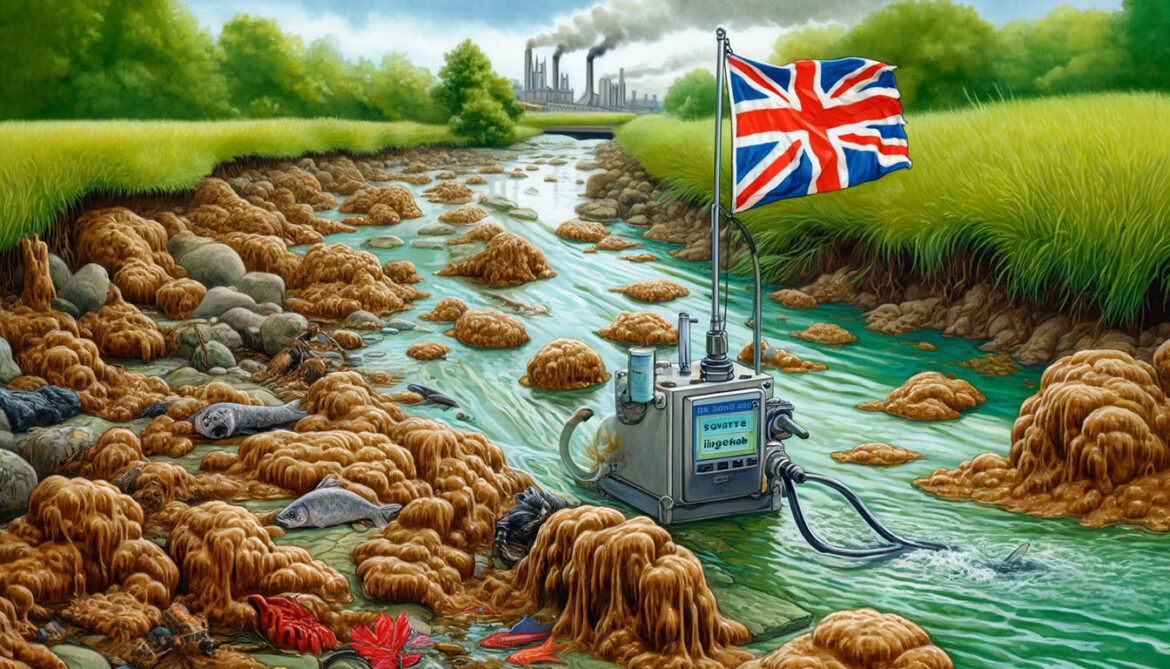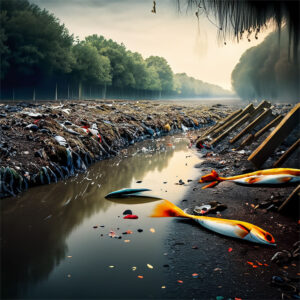The pollution of the UK’s waterways and coastlines with sewage is wreaking havoc on ecosystems, leading to the spread of microscopic bacteria that multiply into harmful algal blooms. These blooms deplete oxygen levels in the water, creating extensive dead zones. Yet, while this issue has garnered attention, a far more insidious problem has slipped under the radar: the outbreak of sewage fungus in the UK’s rivers, ponds, and lakes.
Researchers from the University of Oxford, including associate professor Michelle Jackson and her colleagues, have delved into the murky waters of sewage fungus detection. Their findings reveal that changes in a river’s chemical and physical properties, such as high nitrate concentrations from agricultural runoff, correlate with the spread of this harmful sludge. The implications of their research are dire: sewage fungus threatens aquatic life, human health, and the economy, signaling an urgent need for action from governments, water companies, and regulators.
What is Sewage Fungus?
Despite its name, sewage fungus isn’t a true fungus. It’s a conglomeration of microscopic bacteria, viruses, and other organisms that form visible masses in water, often in areas with poor water quality or insufficient sewage treatment. More than 100 types of sewage fungus exist, with Sphaerotilus natans and Beggiatoa alba being commonly found in English rivers. These organisms thrive in nutrient-rich environments contaminated by sewage effluent.
The Environmental and Human Health Impact
The presence of sewage fungus is a glaring indicator of poor water quality. It reduces oxygen levels in water, stressing aquatic life and leading to the death of fish and shellfish. For humans, the risks are equally concerning. Contaminated water used for recreational activities such as swimming or fishing can cause illnesses due to the presence of human parasites among the microorganisms.
The fungus also exacerbates the effects of other pollutants, including agricultural and urban runoff. This complex interaction remains poorly understood but highlights the need for comprehensive approaches to pollution management.
Advanced Detection and Necessary Actions
Traditional methods of detecting sewage fungus rely on visual inspections, making it challenging to identify early-stage growths. However, advanced technologies such as machine learning and microscopy offer more precise detection. Using a machine called FlowCam, the researchers successfully identified and quantified sewage fungus filaments before they became visible to the naked eye.
To combat this issue, regulatory bodies and water companies must adopt these advanced detection methods for more efficient monitoring. Quick intervention can limit pollution sources, preventing future outbreaks and safeguarding both ecosystems and public health.
The Role of Citizens
Local communities can play a pivotal role by reporting pollution incidents, including sewage fungus outbreaks, to the relevant authorities. Gathering detailed information about the location, date, and time of these incidents can aid in more comprehensive monitoring and response efforts.
The burgeoning crisis of sewage fungus in the UK’s waterways demands immediate attention. It endangers aquatic life, human health, and the broader environment. By leveraging advanced detection technologies and fostering community engagement, the tide of this growing menace can be stemmed. Governments, water companies, and environmental groups must act swiftly and decisively to protect precious freshwater resources before it’s too late.




